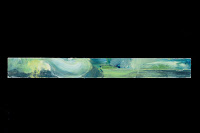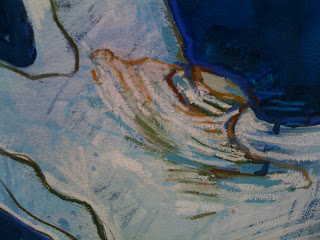Welcome to a series of my thoughts, ideas and opinions about creativity and the creative process. My intention is to build awareness in developing and nurturing more highly functional, creative children who know how to thrive in any environment. After teaching for 7 years I slowly noticed a developing pattern, or trend, in the amount of time I liked to sit down durning the day in relationship to the amount of time students liked being seated. As an artist and an art teacher, you are always on your feet, grabbing supplies, moving canvases, stepping away from the art, getting in close to it, jumping, sitting, leaning...rarely sitting for hours at a time. I love this about art, it allows and demands that I move around.
Here's another observation. Children LOVE moving around. Fidgeting, running, tapping their toes, scratching their head, flinging their pencil, changing seats, opening the window, go to the bathroom, scooting their chairs in, scooting it out again...all in 5 minutes time. And as an art teacher I've observed that young children, in general, are the MOST uncensored, uninhibited, energetic, creative and abstract thinking out of all of us. Coincidence that they love to move?
The idea, that I'd like to further develop and explore, is that movement, kinetic activity, physical motion, stirs that reptilian, intuitive mind body connection, further fueling the imagination, the brain and thus the whole body system as a creative source of energy and genius.
The question I have is...why are there so few opportunities in the average classroom and even the exceptional classroom, for a student to be physically engaged in a way that will fuel their physical system, give the cerebral brain a rest and tap into the experiential body intelligence that feeds the immagination?
Hall passes, water breaks, messengers, these are not solutions for children who need significant windows of physical acitvity to help them focus, nor are they the exception to normal classroom routine. Their desire and need for movement needs, and is slowly getting, more consideration for the overall needs of all students, and adults alike.
Please post any thoughts or comments you may have and share your ideas.
Cheers!





















































